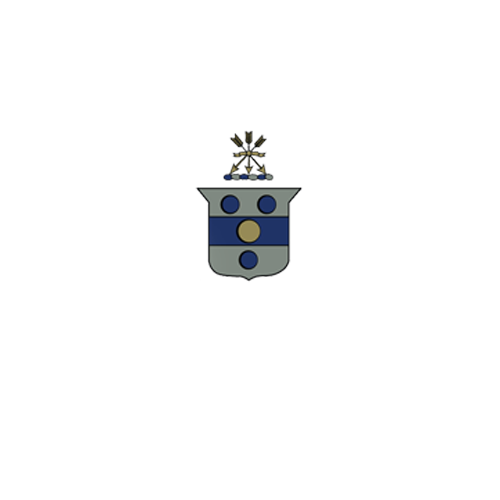The Fairbanks Role in Creating the Ditch or Mother Brook at Dedham, Massachusetts
A Grist Mill for Dedham, Massachusetts
What would you do to have a piece of bread if it wasn’t readily available? Life was tedious in the early 1600’s, especially for women who ground their own corn and other grains by hand to make porridge and bread. The Indigenous Peoples ground their corn on a rock mortar with a pestle.
Very large mortar and pestle shaped by the Indigenous people found at Sudbury, Massachusetts
In Watertown, Massachusetts, where the Fairbanks probably lived when they first came to the New World, a water-driven gristmill was built in 1632, one year before they arrived. The Fairbanks family moved to Dedham, a new town, in March of 1636/7. There was no mill in that town until 1641.
Grain had to be ground with a hand mill. Governor Winthrop commissioned hand mills from England for the Massachusetts Bay Colony. Dedham Historical Society and Museum still has one of these hand mills in their museum.
Typical Mill Stone
Dedham attempted to establish a water-driven grist mill in the first years of settlement. At the meeting when Fairbanks was accepted into town, March 1636/37, Abraham Shaw, a man also from Halifax Parish in England, was granted 60 acres of land to along the Charles River to build a water-driven gristmill. At the same meeting, every man of the town was required to help retrieve millstones from the Watertown mill.
In late 1638 or early 1639, before Shaw erected his mill, he died. Shortly after Abraham Shaw’s death, when the town met on March 25, 1639, they offered any man in town, who would erect a watermill by the first day of the 10th month (November), the same amount of land and the same privileges that were granted Mr. Shaw. No one stepped up to build the mill.
The Ditch/Millbrook/Mother Brook
First Man-Made Industrial Canal Constructed in British North America
The land around Dedham was very swampy. The Charles River was choked with fallen trees over the ages. The river was sluggish, not ideal to run a mill.
During the freshettes or early spring flooding, the Charles overflowed its bank as it rushed to the ocean from its inland source. The water that was left behind accumulated but drained toward East Brook and eventually into another nearby river, the Neponset. The townsmen found the gradient of drainage from the land, with addition of water from the Charles River, sufficient to run a mill.
On March 35, 1639, the town received approval from Governor Winthrop and the General Court to commence digging a canal to drain the land and provide adequate water flow to run a water-driven mill. They created a ditch 4000 feet long from the Charles River to East Brook which flowed into the Neponset.
Between 1639 and 1641, every able man of Dedham was responsible to assist in digging the ditch.The first water ran through the ditch July 14, 1641.
Mother Brook is depicted at the bottom center of the map between the Charles River and the Nepostset River to the southeast.
The First Grist Mill of Dedham
John Elderkin, a millwright from Lynn, Massachusetts, about twenty-four miles north east of Dedham, became a resident of Dedham, December 22, 1641. The townsmen probably requested his presence in order to encourage him to build the mill. Perhaps they granted him land or “gifts” to move to Dedham. On Feb 22, 1641, the townsmen gave John Elderkin three acres on the east side of Millbrook or East Brook. He erected a grist mill on the stream.
On July 14, 1641, the same day the first water ran through the Ditch, Jonathan Fairbanks, John Dwight, and Francis Chickering were appointed to lay out a cart way to the watermill that would be convenient for the town. They were also to consider foot paths to the mill and determine compensation for those whose land was crossed by such paths. (DTR, page 79)
Early depiction of the grist mill found in “A History of Dedham, Massachusetts by Frank Smith
After the mill had run a year, Elderkin sold half of the mill and holdings to Nathanial Whiting and the other half to John Allin, Nathaniel Aldis, and John Dwight. By 1643, John Elderkin was building a mill in Lynn.
The men of Dedham operated the mill until 1649 when Nathaniel Whiting became sole owner. Another transaction took place in the year of 1652. After that the Whiting family ran the mill/mills for a total of 174 years. There was only one mill on The Ditch until 1653 (Worthington, page 3)
John Elderkin’s work in Dedham may have had far reaching significance to the Fairbanks family. Likely many men of Dedham assisted in the erection of the watermill. Two Dedham youths of that time, Jonas Fairbanks, age seventeen, and Robert Crossman, age twenty, later, went to Lynn (Saugus), Massachusetts in 1650-1651 to help with the maintenance of the waterwheels that ran the ironworks there. The Saugus Ironworks was the first successful refiner and manufacture of iron in New England.
Dedham now had easy access for grinding their grains. The women could make breads out of finer flours. Dedham also had a successful future using Mother Brook for water-driven mills for grain, sawing lumber, textiles, fulling cotton and wool, paper and wire.
I will write more about the Saugus Iron Works, Jonas Fairbanks, and Robert Crossman in the future.
Resources:
Hartley, E.N. Ironworks on the Saugus. University of Oklahoma Press. Norman, 1990 ed., 1957.
Hill, Don Gleason. The Early records of the town of Dedham, Massachusetts, 1636-1659. 1892. https://archive.org/details/earlyrecordsofto03hill/page/n5/mode/2up
Smith, Frank. A History of Dedham, Massachusetts. The Transcript Press, Inc., Dedham, Mass. 1936. https://archive.org/details/historyofdedhamm00smit
Worthington, Erastus. Historical Sketch of Mother Brook, Dedham Massachusetts 1639-1900.
C.G. Wheeler, Dedham, Massachusetts. 1900. https://archive.org/details/historicalsketc00wortgoog
Up Next
Fairbanks Family Roll in the Town Works of Dedham











